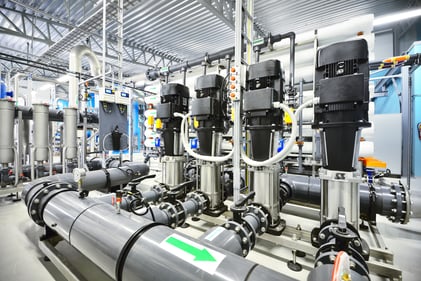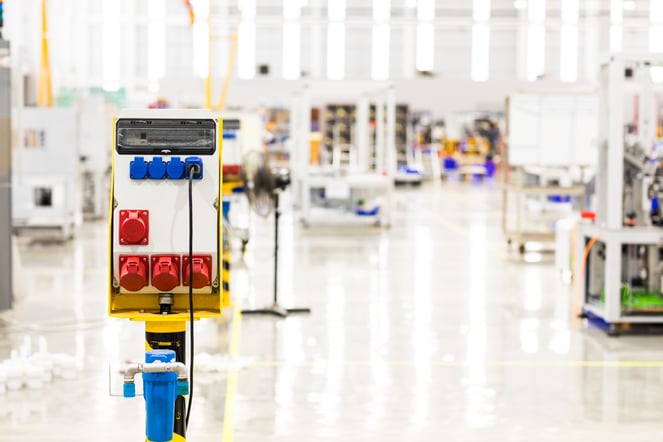1.1. WHAT IS UL? 
As we have discussed earlier, Underwriters Laboratory (UL), offers services that range from the certification of personnel, products, facilities, processes, and systems, to identifying and closing regulatory gaps, confirming compliance, and maintaining customer certifications. The company also partners with its customers to help them sustain best practices across their companies and value network. More information about UL and why UL Certification is important can be found here. (linked to the first article: UL certification)
2.1. WHAT ARE UL STANDARDS?
UL Standards encompass UL's extensive safety research and scientific expertise. With over a century of experience in the development of more than 1,500 Standards, UL is an accredited standards developer in the US and Canada. In extending its global public safety mission, UL Standards partners with national standards bodies in countries around the world to build a safer, more sustainable world.
2.2. UL STANDARDS: ACCREDITED IN THE US AND CANADA
In the US, UL is accredited by the American National Standards Institute (ANSI) as an audited designator. In 2013, UL was accredited by the Standards Council of Canada (SCC) as a nationally recognized Standards Development Organization (SDO) able to develop the National Standards of Canada (NSCs). UL's Standards Technical Panels (STPs) serve as the consensus body for both American National Standards (ANS) and National Standards of Canada (NSC). See also UL Marks for Canada & The United States.

3.1. WHY IS IT IMPORTANT TO UNDERSTAND THE UL STANDARDS?
It is important to understand the UL protection standards because many equipment designers are still very confused by the standards. This lack of understanding can result in mixing conflicting standards or applying the wrong standards, and by doing so the engineer may end up reducing the level of safety and/or performance of the device(s) being installed.
It is widely acknowledged that UL standards terminology can be very confusing, so this only further exacerbates the problem. With sufficient understanding of the standards, however, engineers will find it much easier to apply the right standards and ensure peak equipment safety and performance.
Despite the widespread confusion in regards the UL Standards, it largely goes unacknowledged. Most people do not want to be the only person in the room who ask a question to which they believe “everyone else” knows the answer.
3.2. WHAT IS THE UL 489 STANDARD
The National Electrical Code defines a branch circuit as "the circuit conductors between the final overcurrent device protecting the circuit and the outlets". UL 489 devices open automatically once overload and short circuits occur, to protect wires and cables.
The definition of a branch circuit overcurrent device is outlined in Art. 100 as follows: "A branch circuit overcurrent device is a device capable of providing protection for service, feeder, and branch circuits and equipment over the full range of overcurrents between its rated current and its interrupting rating".
3.3. UL 489 Applications
UL 489 can be used within the following applications:
- Control panels
- Motor control centers
- Panelboards
- Switchboards
- More
3.4. THE UL STANDARD 489's SCOPE
Molded-Case Circuit Breakers, Molded-Case Switches, and Circuit-Breaker Enclosures
1.1. The requirements of this standard cover are molded-case circuit breakers, circuit breaker and ground-fault circuit interrupters, fused circuit breakers, high-fault protectors, and high-fault modules. These circuit breakers are specifically intended to provide service entrance, feeder, and branch circuit protection in accordance with the National Installation Codes in Annex B, Ref. No.1.
This standard also covers instantaneous-trip circuit breakers (circuit interrupters) specifically intended for use as part of a combination motor controller in accordance with the National Installation Codes in Annex B, Ref. No. 1.
1.2. This standard covers molded-case switches and fused molded-case switches.
1.3. This standard covers devices rated at 1000 volts ac and 1500 volts dc or less and 6000 amperes or less.
1.4. The devices referenced in 1.1 and 1.2 are intended for installation in an overall enclosure or as parts of other devices such as panelboards. The acceptability of the combination will be determined when the complete product is investigated.
1.5. This standard covers circuit-breaker enclosures and accessory devices intended for use with the devices described in 1.1 and 1.2.
1.6. This standard does not cover low-voltage power circuit breakers covered in Annex B, Ref. No. 3 and Ref. No. 4 or supplementary protectors covered in Annex B, Ref. No. 5.
1.7. This standard contains supplements covering the requirements for molded-case circuit breakers for:
- Marine Use
- Naval Use
- Uninterruptible Power Supply Use
- Classified Circuit Breakers
- Software in Programmable Components
- Additional Tests for Circuit Breakers with Electronic Overcurrent Protection
- Electromagnetic Compatibility (EMC) - Requirements and Test Methods for Circuit Breakers
- Molded-Case Circuit Breakers with Additional Motor Overload Protection
4.1. UL 489 standard tests
For electronic trip circuit breakers and uncompensated thermal-magnetic circuit breakers rated 40°C, the test sequences are as shown below:
- 200% calibration at 25°C (77°F)
- 135% calibration at 25°C (77°F)
- Calibration of adjustable instantaneous trip
- Overload
- Tungsten lamp load
- 100% calibration at 40°C (104°F)
- Temperature and 100% calibration at 25°C (77°F)
- Endurance
- 200% calibration at 25°C (77°F) repeated
- 135% calibration at 25°C (77°F) repeated
- Interrupting ability (Y sequence)
- Interrupting ability (Z sequence)
- 200% trip out at 25°C (77°F)
- Dielectric voltage withstand
5.1. COMMON MISAPPLICATIONS OF UL 489: UL 489 VS UL 1077
5.1.1. What are UL 1077 Supplementary Protectors?
Many engineers make the mistake of substituting UL 489 devices for applications that are best suited to UL 1077 devices and vice versa. Here we explain the differences between both standards and their applications.
UL 1077 devices are supplementary protectors designed to combat overcurrent, over-voltage, or under-voltage in equipment where branch-circuit overvoltage protection is either already provided or is not required.
The UL 1077 standard defines a supplementary protector as "a manually resettable device designed to open the circuit automatically on a pre-determined value of time versus current or voltage. Sometimes located within an appliance or other electrical equipment, they may have a device to manually open and close the circuit. They provide overcurrent and overvoltage equipment protection but limited short-circuit protection, and are always located after the branch circuit protection."
5.2. UL 1077 Applications:
- Appliances
- Electrical equipment
- Control circuits
- Control power transformers
- Relays
- More
5.3. UL Standards Comparison – UL 489 vs UL 1077
- While UL 489 devices are evaluated and “Listed” for use as a standalone product, UL 1077 devices are evaluated and “Recognized” for use as components in “Listed” products meant for factory use.
- While devices that fall under both UL 489 and UL 1077 must pass a series of similar tests, the UL 489 devices undergo more rigorous testing.
- While a UL 489 circuit breaker can protect multiple devices at a time, a UL 1077 supplementary protector protects only one device, except for those that feed motors or transformers and those that exit the equipment.
- While a UL 489 circuit breaker can be used in place of a UL 1077 supplemental protection device, a UL 1077 supplemental protection device cannot be used as a UL 489 branch circuit breaker.
6.0. CONCLUSION 
As advancements such as robotics increase the complexity of equipment, the risks for injury and disaster also rise in equal proportion. It is very important that engineers take the necessary steps to ensure the safety of equipment and the safety of final users or consumers of their products. One such step is a good understanding of the UL standards which we have discussed in this article.
Equipped with this knowledge, you have one more tool in your arsenal to enable you to design and manufacture safer and more reliable equipment. Want more UL standard information and how to apply those to your control panel or machine? Read our UL508A blog as well.
Do you need to discuss electrical components and application of UL standards for your machine? Dynamic can help you with proper certifications, marks or ratings. Get in touch with us now to discuss how your machines will benefit when you work with someone with years of experience and knowledge in this field. You can also stay in touch with us by signing up for our newsletter, and by following us on our LinkedIn and Facebook pages.







